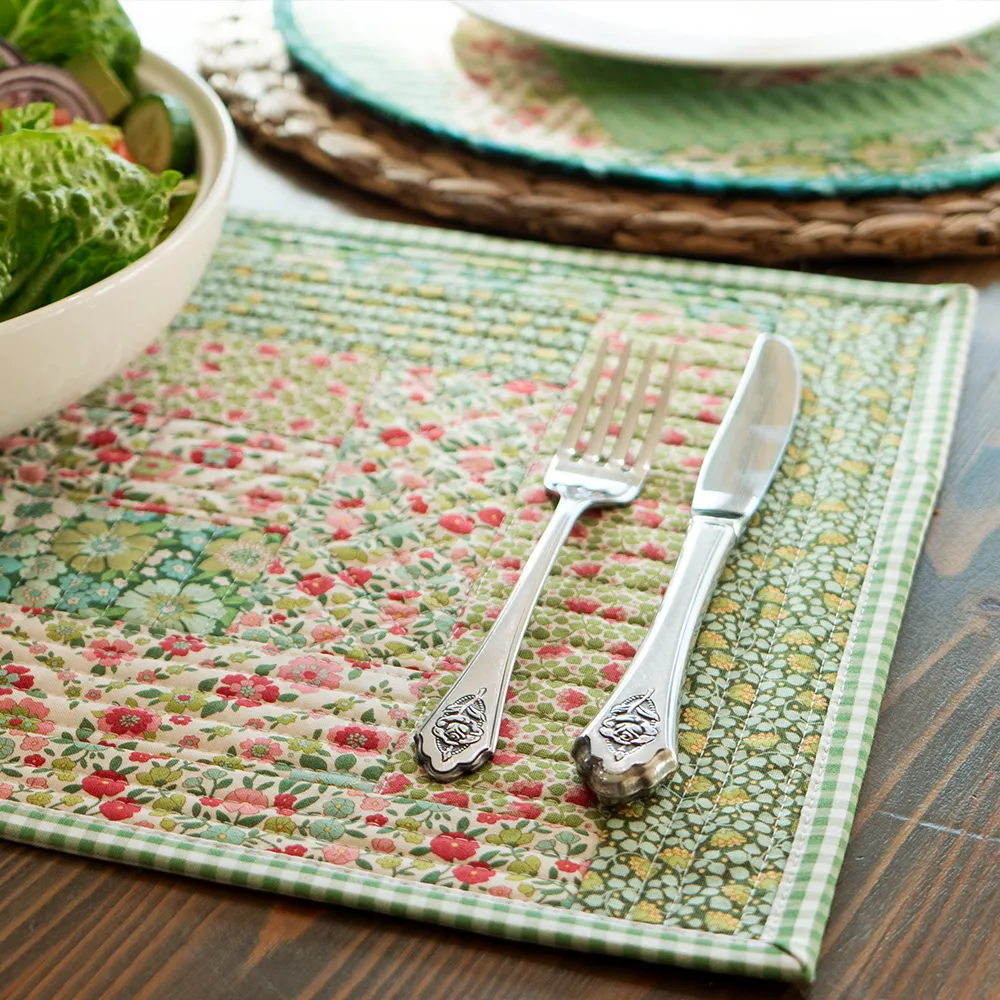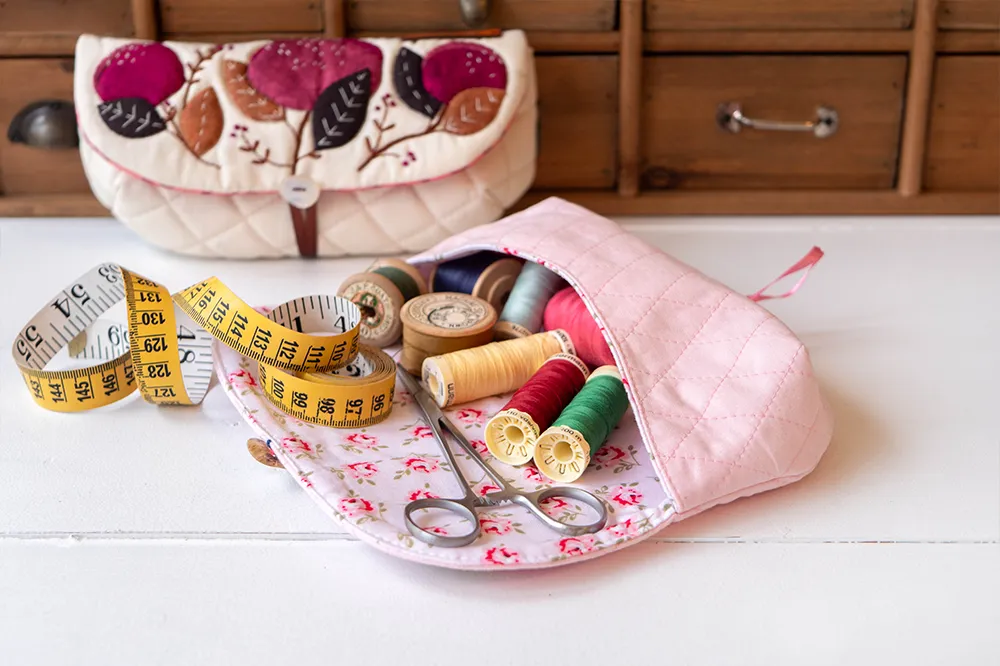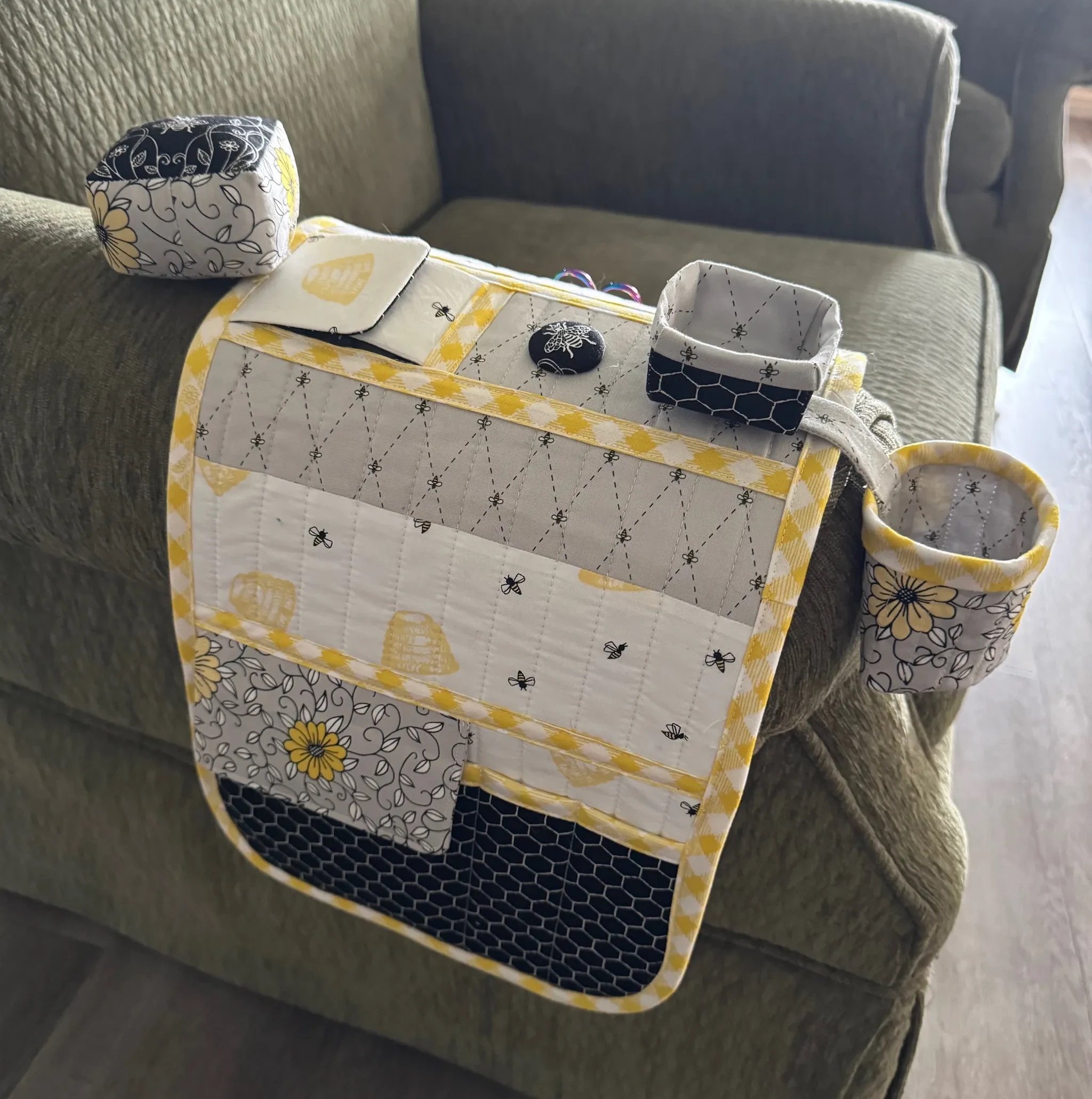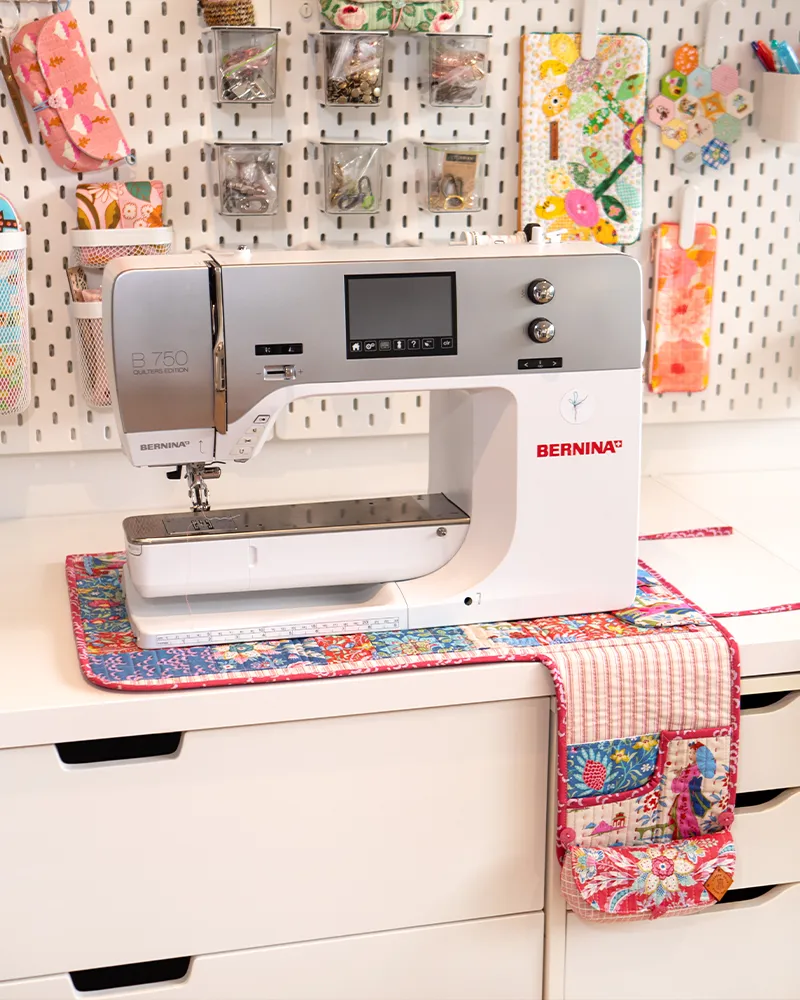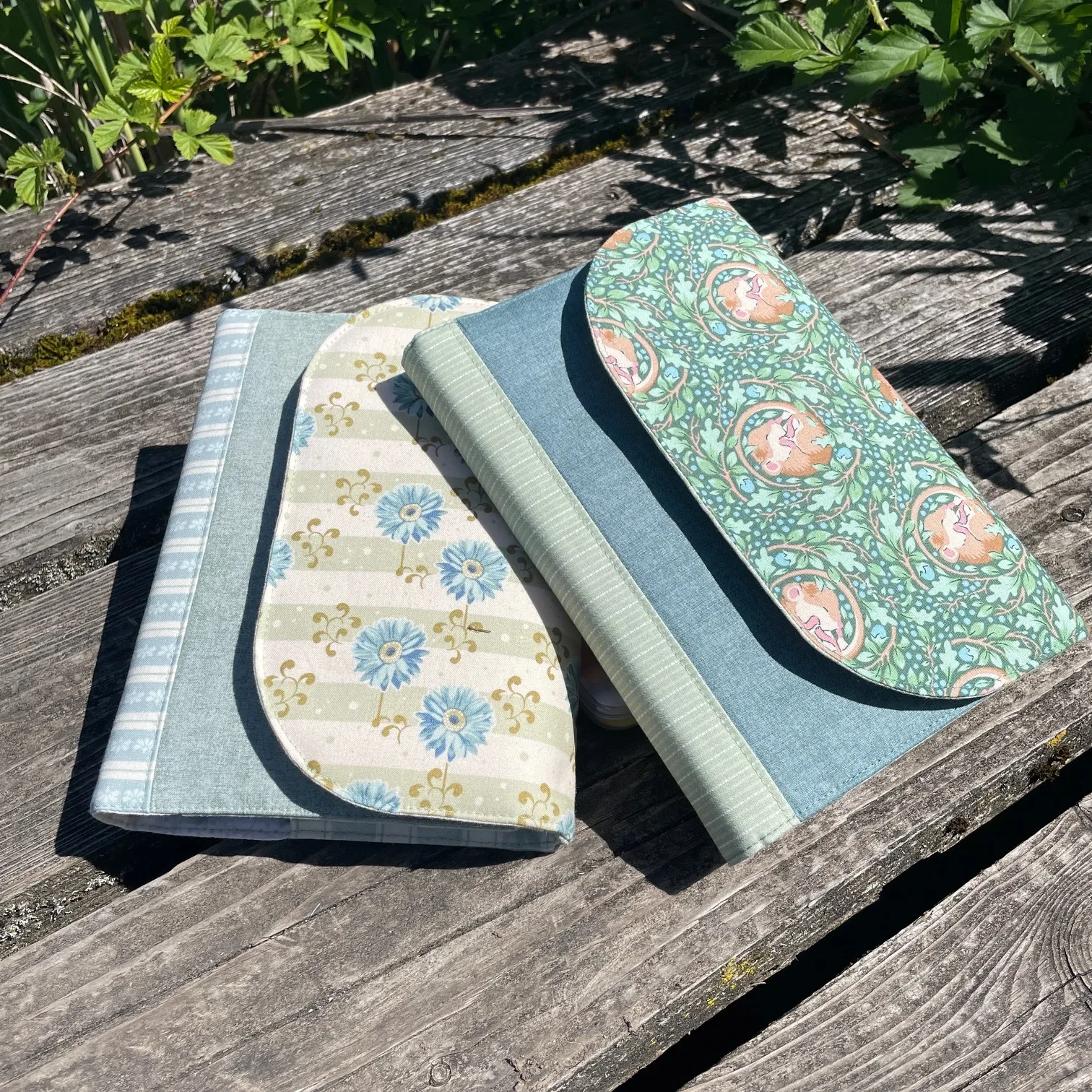
Naughty or Nice Quilting
Why do you quilt the way you do? Let's review our preferred methods, rituals and processes
Why do you quilt the way you do?
What are your preferred methods, rituals and processes?
We all have assumptions with our sewing knowledge that we often just take for granted.
We get so used to the way we do things, that it’s completely normal for us. Sometimes the knowledge of a process we follow came from someone we held in high regard, like mum or grandma.
They taught us the way to do things; that certain things that must never be done, and other things must always be done.
We can treasure and cling to that knowledge because of who taught it to us.
Sometimes we don't know why we do things a certain way, we just always have.
But one girl’s sewing hack might be another girl’s biggest no-no, and sometimes new products and methods are invented that previous generations never had.
So I’ve compiled a list here is to get you thinking, questioning and maybe even opening your mind.
After all, the processes we follow need to aid our final result, not make it harder.
Sometimes it helps to step back and examine the way we do things, and ask whether it really needs to be done that way.
Are your sewing habits helping you or slowing you down?
Without further ado, here is my first list of Naughty? Or nice quilting hacks…

1. To Pre-wash or Not Pre-wash?

There was a time when I used to bring all my fabric home from the shop and dump it straight into the washing machine for a quick rinse.
It sorta rained on my parade, because I’d be impatient to start cutting it up, and it added a few hours extra waiting!
So why would you prewash?
Pros for pre-washing...There will always be a small amount of shrinkage when you wash your fabric, so pre-washing will certainly take care of that for you.
In the case where you might be planning a quilt with two or more different brands of quilting cotton, different weight fabrics, or even a pairing a printed cotton with a woven, shrinkage amounts are definitely something to consider.
Pre-washing takes the worry out of different shrinkage rates.
Colour bleeding...some dyes used in the industry aren’t as colour fast as others, and some are even over dyed. There’s nothing more distressing than chucking your finally finished quilt in the washer and having the colours bleed onto each other. There are some great products out now that help reduce the probability of this happening, but if you don’t want to take that risk, then pre-washing might be for you.
Does your new fabric stink sometimes??
Eww... I don’t have a great sense of smell, but I am sensitive to particular odours.
Sometimes the trip that fabric makes as it travels in a shipping container can mean it has a musty, dirty smell, which really puts me off. I definitely pre-wash my fabric when this is the case. I have to say that I think standards have improved, and at least for me I don’t find this happening so much anymore.
Cons for pre-washing...New fabric contains a certain amount of size or starch in it as it’s made, which greatly adds to the stability of the product.
It makes it much easier to cut up, as the size helps to hold it in place.
Pre-washing removes all this, and softens it up a lot, which is certainly what you want when you come to use the final product, but not so much when you’re sewing with it.
Pre-washing will definitely add that extra time into the equation before you can start your actual quilting project. The washing and the drying adds up.
There is also the additional pressing time to take into consideration...that stuff comes out the dryer crinkled.
Take into consideration this extra time if you have to iron 8 or more metres for your quilt project.
So what about you...are you team pre-wash or team not prewash?
2. To Starch or Not to Starch?

Are you a fabric starcher?
Pros for starch...Starch gives your fabric a bit more body, and a ‘paper’ quality, which makes cutting it more accurate, sewing more predictable, and produces a crisper finished block.
There are several versions of starch out on the market, ranging from super cheap supermarket starch, to fairly pricey quilters versions.
Cons for starch...Starching adds an extra step to the quilting process that you may not see as important or necessary.
Starch is also really messy to spray around, makes your floors slippery (!) and can flake and even stain.
If you overheat it with the iron it will leave a scorch mark which can be challenging to remove.
It really comes down to what is more important and enjoyable to you while quilting.
Some quilters get on just fine using the sizing that’s already in the fabric, without adding extra. Others use it and love it for the benefits they see.
So what about you??
Are you team starch or team no starch?
3. Pressing Seams Open or to the Side?

This one seems to be a surprisingly hot topic!
Does it matter whether you press your seams open or to the side?
This was quite a new thing for me, as I come at quilting from a dressmaking background, where most seams are pressed open for maximum flatness.
Pros for pressing seams open...Pressing open will still give you the flatter seam, which is also preferable when quilting the top.
Many long arm quilters will definitely appreciate this a lot more! When there’ll be a large junction of many seams meeting...it’s easy to snap a needle on a thick seam junction!
Pros for pressing seams to the side...
Now with the rise of the busy quilter, who just needs to maximise their sewing time, pressing to the side has become very popular.
It allows your seams to ‘nest’ and lock together, making for pretty points with minimum effort.
It’s preferable if pressing the side, to ‘press to the dark side’, but sometimes with a particular quilt design this isn’t always possible, and it can lead to ‘shadowing’ of a darker fabric through the quilt top.
So what to do? Well, I usually decide based on the quilt I’m making.
I really enjoy nesting my seams, and the amount of time saved there in matching points easily. But I’m pretty fussy about darker fabric showing through when I’ve had to press the wrong way. I’ve learnt the hard way with this!
So sometimes I take the time to just press open, use more pins, and the quilt gets made in the end.
Another aspect to consider here though is when you’re quilting in the ditch with open seams: realise this means that you're essentially just sewing on the threads between the two pieces of fabric, not actually catching the quilt top layer.
This could lead to a weaker finished product that wears differently over time.
I only heard this recently, and it made me ponder...
does anyone have experience with this??
So are you a side presser or an open presser, or do you vary with each particular quilt?
4. Pin Baste or Spray Baste?

So you’ve finally got that beautiful quilt flimsy together and the top is finished!
What to do next? You want to crack on and get to the quilting, which if you’re like me, is my absolute favourite part.
Adding all that puffy texture to my hard work is like the icing on the cake!
But should you spray baste or pin baste?
This once again has pros and cons, and plenty of quilters who will cheer loudly for each team.
So what’s good about them? Let’s look first at pin basting…
Pros for pin basting...
This would be the traditional method that’s widely used, and involves pinning all three layers of your sandwich together.
Once you’ve bought enough pins, that’s the end of the cost...they’re completely reusable. They’re also free from the toxins and odour that the spray tends to have.
Cons for pin basting...The cons are that it takes a looonnng time to pin baste a large quilt.
You’ll need a large number of pins/safety pins for this...so some outlay to start with. You also have to keep stopping whilst you’re quilting to remove them, as you can’t sew over them.
That can totally ruin your jam if you’re a fast quilter.
Pros for spray basting...
Spray basting on the other hand is fast....like really fast.
You can spray baste a large quilt in a fraction of the time it takes to pin baste. It also completely fuses the layers together if you use enough of it, and you don’t have to stop while quilting to remove pins, which is also a lot faster.
Cons for spray basting...
So onto the cons...the first being the cost. As it’s consumable, you can expect to use at least a can on a decent sized quilt, which does add quite a bit to the overall cost.
And then the smell and overspray issues are fairly major. That stuff is stinky!
The family always complains about the smell if I’m spray basting, and not only that, it gets on everything.
Which team are you on...spray baste or pin baste...or maybe both??
PS Did you know there’s also basting powder?? It’s a semi permanent bond that you fuse with your iron, and is not something I’ve tried, but am very curious about…what about you, have you tried it??
5. Hand bind or Machine Bind?

Are you team hand bind or machine bind?
I’ve heard quilters list both hand binding and machine binding as being the more durable, and neater than the other.
Huh.
But have you ever seen a well worn quilt?
You’ll notice it’s the very edge of the binding that actually frays and comes apart, not the actual stitching holding it on, be it hand stitched or machine stitched.
So either argument doesn’t hold true.
As for neatness, you'll see messy hand binding, and beautifully neat machine binding, and vice versa.
Pros for machine binding...
The one thing that hand binding can’t compete with machine binding for is time.
Hands down you can bind a huge quilt in a fraction of the time sewing it on the machine. And if time is money to you, then choose that way every time.
Pros for hand binding...
For some quilters, there's nothing they look forward to more than the mindful, repetitive calming nature of hand binding.
It's a favourite form of therapy, a sort of definite peaceful closure of a project.
So what is your preference, and why?
Do you hand bind or machine bind?

The aim of this discussion is to help you take stock of your processes and decide which works best for you.
It's always good to live with intentional choices, not accidental ones, and it’s your project which you have full autonomy over.
Choosing any of them will still mean that the quilt gets done despite the many different paths meandered along to get there.
It’s a choose your own adventure, with a finished quilt to be had at the end.
So pick a path, pick a method, and enjoy the process!
Join my Facebook community

If you're a social bee, get involved with over 1100 sewists, quilters, and creators from around the world. Share your creations and get inspired!



